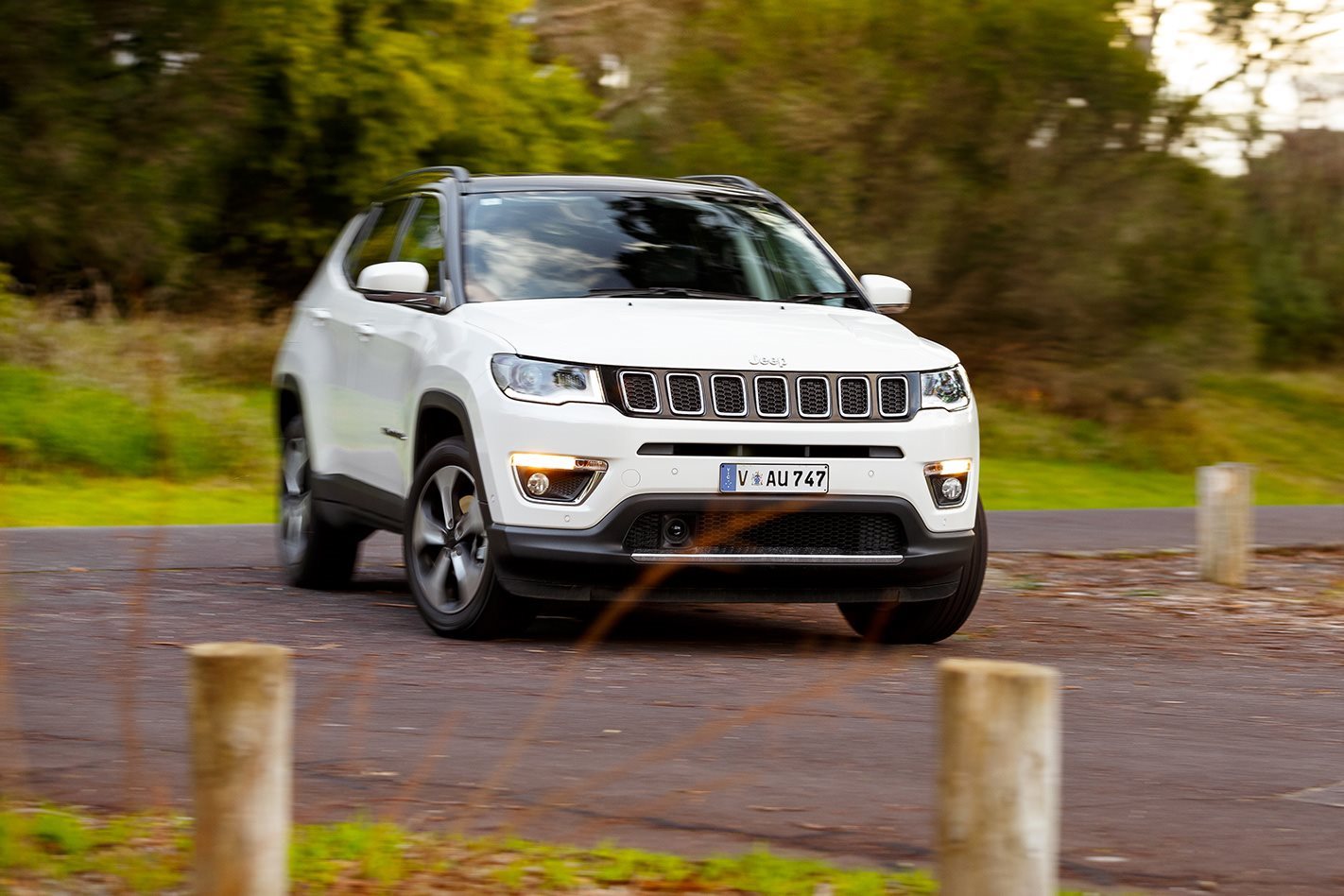
Score breakdown
Things we like
- Styling, ride and handling, off-road capability, boot space
Not so much
- Towing capacity, lacklustre petrol engine, AWD petrol fuel consumption
What stands out about the Jeep Compass?
The second-generation Jeep Compass gained a more attractive, rugged look and improved build quality over its predecessor, along with a gutsy turbo-diesel engine in the 4WD Compass Trailhawk that offers genuine off-road capability. It is such an improvement over the previous model that it is outselling the popular Cherokee in Australia.
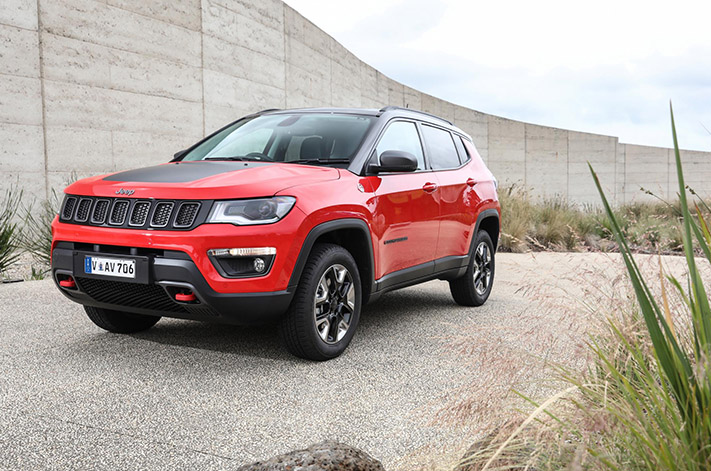
What might bug me?
Not being able to tow anything if you have a petrol, front-wheel-drive Compass.
Getting a flat tyre and having to travel under 80km/h on a space-saver spare wheel until you can repair the puncture. Only the most-expensive Compass, the Trailhawk, has a full-size spare.
What body styles are there?
A five-door SUV is the only body style. The most affordable Compasses, the Night Eagle, drives only its front wheels, but the Limited, Limited S and Trailhawk drives all four wheels. The Jeep Compass is classified as a small SUV, lower priced.
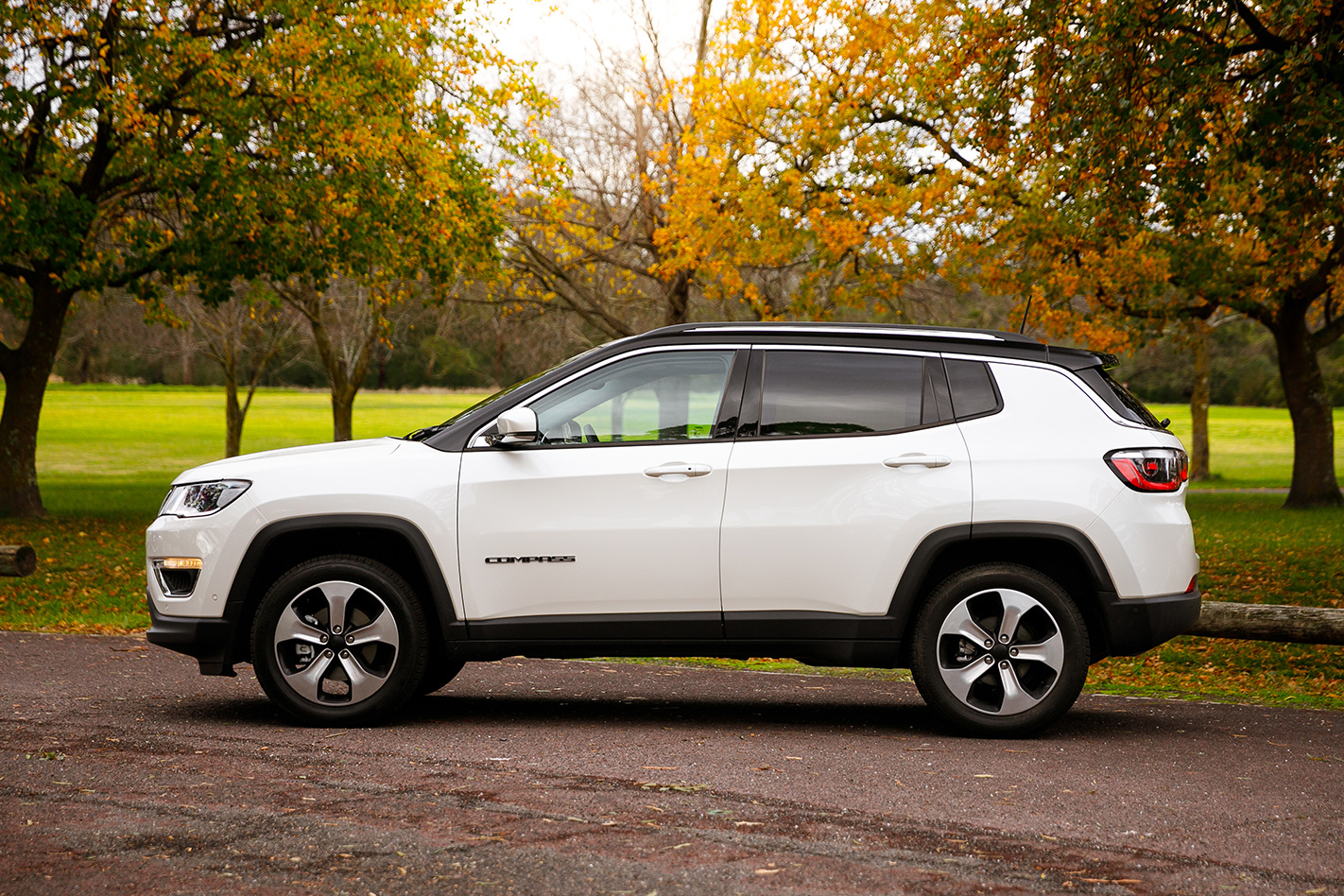
What features do all Compass versions have?
- 8.4-inch touchscreen for rear-view camera and Jeep’s U-Connect infotainment system which includes in-built satellite navigation and Android Auto and Apple CarPlay smartphone pairing.
- AM/FM and digital (DAB+) radio, Bluetooth- or AUX and USB-connected mobile phone functions.
- Active safety including autonomous emergency braking, which Jeep calls Forward Collision Warning Plus, blind-spot monitoring, rear cross-path traffic alert, lane-departure warning and lane-keeping assist.
- Rear parking sensors.

- Voice control for the audio system, and at least six speakers.
- Power outlets (12V) on the centre console and in the boot, and additional USB port at the rear of the centre console.
- Leather-wrapped steering wheel.
- Keyless entry.
- Power folding side mirrors.
- Cruise control with speed limiter.
- Dual-zone climate control air-conditioning.
- A parking brake that is operated by an electric switch rather than a mechanical lever.
- Auto on/off and self-levelling headlights.
- Fog and cornering lamps.
- LED daytime running lights.
- LED interior ambient lighting.
- Tyre pressure warning, which warns you that your tyre is slowly losing air before it’s too late.
- Aluminium alloy wheels.
- Electronic traction control, which helps prevent wheelspin on slippery roads, and trailer sway control helps maintain stability while towing.
- Driver’s seat powered lumbar adjustment.
- Seven airbags, and electronic stability control. (For the placement of airbags, and more on the Renegade’s safety systems, please open the Safety section below.)
- The Jeep Compass has a five-year, 100,000km warranty.
Which engine uses least fuel, and why wouldn’t I choose it?
The Compass comes with a choice of two engines, including the 2.0-litre, four-cylinder ‘Multijet’ diesel that sips fuel at a rate of 5.7 litres/100km according to official testing which takes in to account urban and highway driving.
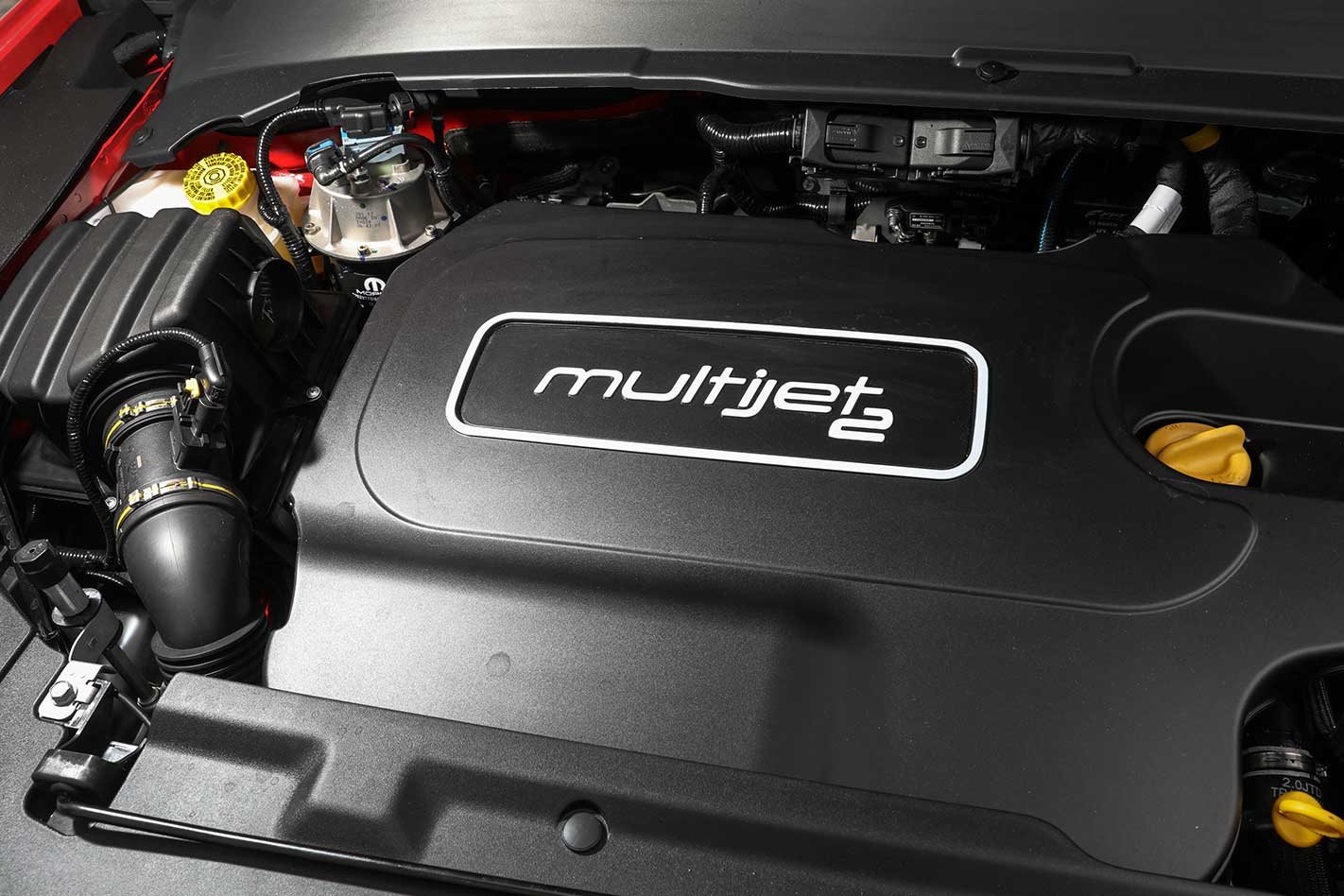
It is considerably more economical, and has more get up and go than the 2.4-litre four-cylinder ‘Tigershark’ petrol engine, which consumes 7.9 litres/100km in the front-wheel-drive Night Eagle, and a greedy 9.7litres/100km in the all-wheel-drive Limited and S-Limited.
While the 2.4-litre petrol is at best adequate and shows its shortcomings when overtaking or climbing hills, the 2.0-litre diesel, with its 350Nm of torque, is the perfect match. The main reason why you may not choose the diesel is that it is only available in the most expensive Compass, the off-road-focused Trailhawk.
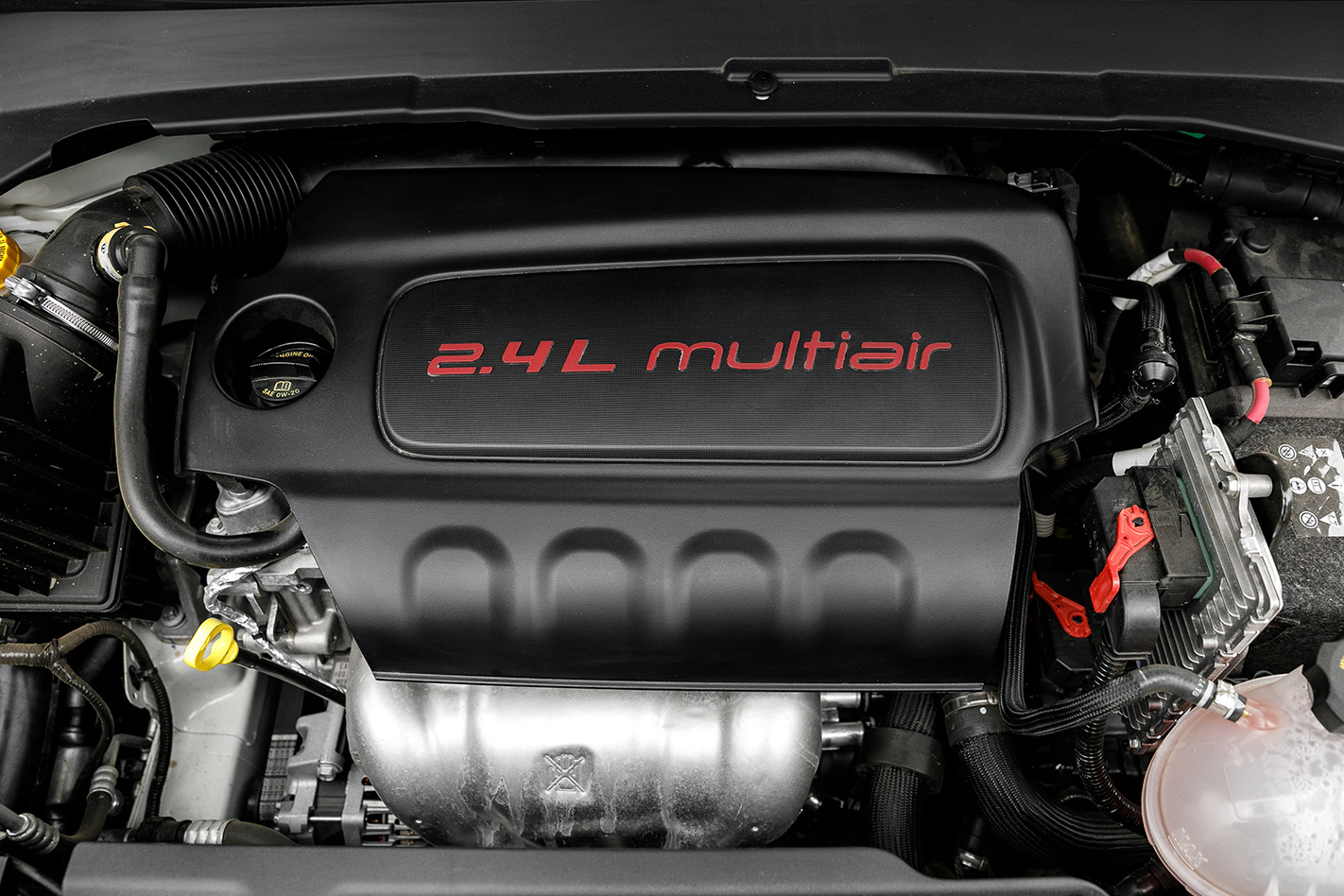
The diesel engine is coupled with a nine-speed automatic transmission, while the petrol comes with a six-speed auto in the FWD Night Eagle and the nine-speed box in the AWD Limited and S-Limited.
What key features do I get if I spend more?
Prices start with the Compass Night Hawk, which has cloth-covered seats, 18-inch aluminium alloy wheels, six-speaker sound system, and the 2.4-litre petrol engine with front-wheel-drive.
Walk past the Night Eagle to the more costly all-wheel-drive Compass Limited and you gain a host of extra features, including:
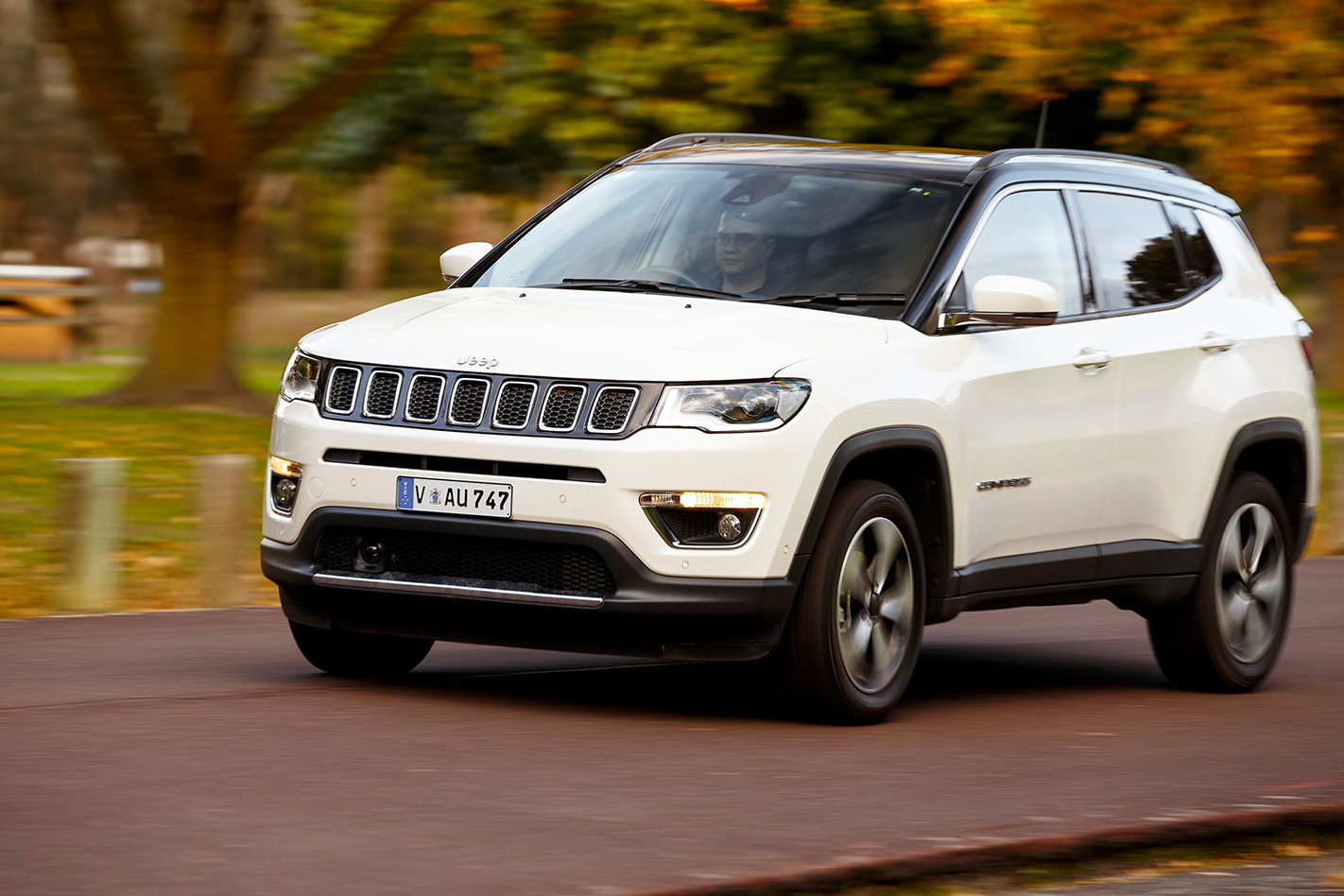
- All-wheel-drive system includes a terrain traction management system, which lets you select different driving modes for driving on sand, mud and snow.
- Adaptive cruise control with stop/go function in heavy traffic.
- Leather seats.
- Power-adjusted and heated front seats.
- Power-operated tailgate.
- 9-speaker premium audio sound system with subwoofer.
- Brighter, bi-xenon, headlight units with automatic high-beam.
- LED tail-lamps.
- Front parking sensors.
- Park Assist which reverses into a parallel or perpendicular parking space for you.
- Auto-dimming rear-view mirror.
- Push-button start, passive entry, and ‘Keyless Go’, which lets you unlock the car and drive away without taking the proximity key from your pocket or bag.
- 19-inch alloy wheels.
- Panoramic sunroof.
- Black-painted roof.
- Exterior accents.
- Black leather seats with tungsten stitching.
The Trailhawk also rides higher, so that it can clear obstacles more easily, and has different front and rear body mouldings that do not extend as far past the wheels, which helps when nudging up to and driving off obstacles. Steel plates under the body protect the engine, fuel tank and other vitals from off-road damage. Wheel size shrinks back to 17 inches, with tyres are designed for off-road use.
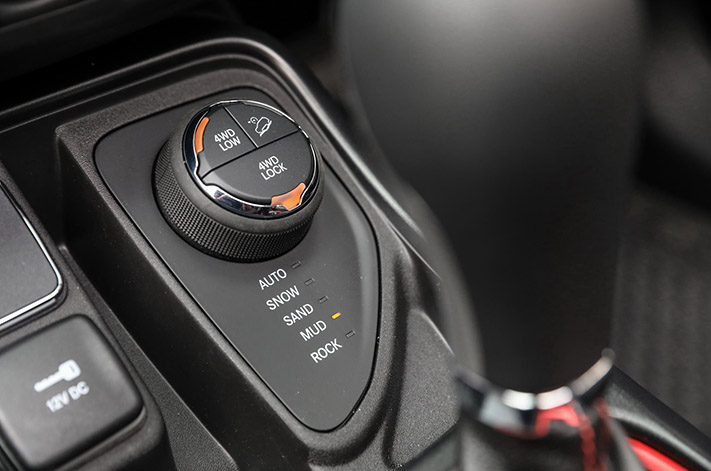
The Trailhawk also comes with hill-descent control to help with tricky off-road slopes, red recovery hooks, anti-glare hood decal, and all-weather floor mats.
Does any upgrade have a down side?
The mid-range AWD petrol Compass Limited consumed significantly more fuel than the more affordable FWD Night Hawk.
The 19-inch wheels on the S-Limited have lower-profile tyres, which makes for a firmer ride.
How comfortable is it?
The Compass feels roomy for a small SUV, and its styling looks like a smaller version of the Jeep Grand Cherokee.
The AWD versions strike a nice balance between on and off-road motoring. Ride quality is excellent and the Compass is even fun in the corners.
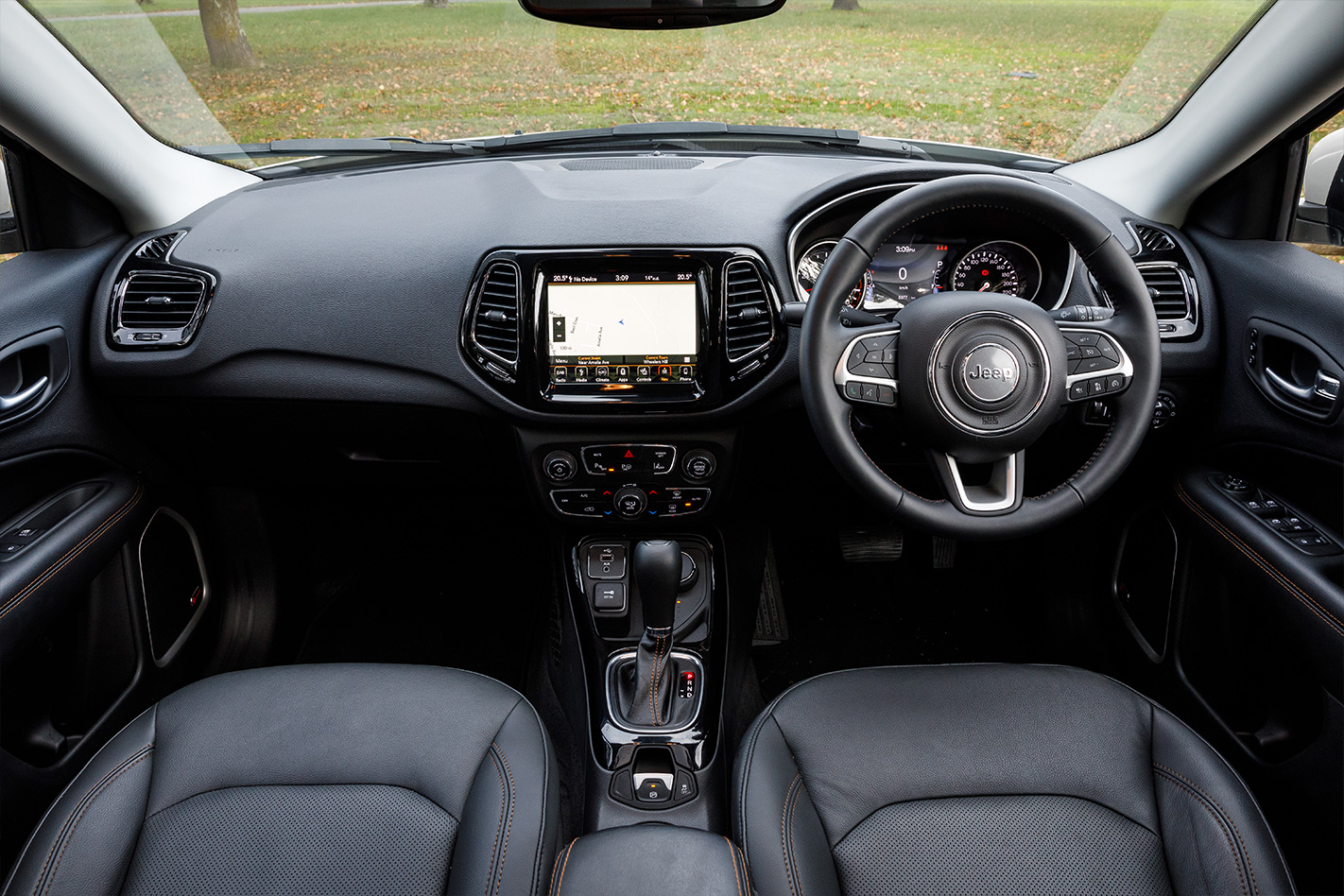
Better seat ergonomics would improve all-round comfort, particularly in the Trailhawk. Rear seat comfort is better with generous space for adults.
The Uconnect system featuring satellite navigation and Apple CarPlay and Android Auto is agreeably seamless.
What about safety in a Compass?
The 2020 update saw active safety equipment become standard equipment. It was previously only available with the Limited and Trailhawk versions or as an extra-cost option.
All Compass versions have autonomous emergency braking, forward collision warning, lane-departure warning, lane-keeping assist, rear-cross traffic alert and blind-spot monitoring.
The Limited and Trailhawk versions also have adaptive cruise control, which will match your speed to that of slower cars ahead on the highway, returning to your pre-set speed when the way is clear, is also included. It will also come to complete stop in heavy traffic and move again with the vehicle in front.
A reversing camera and electronic stability control are also standard. The latter can help you bring a skidding car back under control, and is mandatory on all new cars.
The Compass has seven airbags: Two directly in front of the driver and front passenger; one alongside each front occupant to protect the upper body; curtain airbags down each side of the car to protect the heads of those sitting next to a window; and an airbag to protect the driver’s knees and legs.
The Australasian New Car Assessment Program (ANCAP) has rated the 2018 Compass at five stars for safety, its maximum, in December 2017.
I like driving – will I enjoy this car?
The second-generation Compass represents a huge improvement over its predecessor.
The AWD Compass Limited in particular strikes a fine balance between on- and off-road motoring, with surprisingly good all-terrain ability. Its capability on dirt doesn’t compromise on-road ride quality and it’s even fun in the corners, as is the FWD Night Eagle. Better seat ergonomics would improve all-round comfort but that’s a small point. Rear seat comfort is better with generous space for adults.
The Compass Trailhawk is also quite refined on the open road. It offers good noise insulation, a compliant if slightly firm ride, lively handling, and predictable and well-weighted steering.
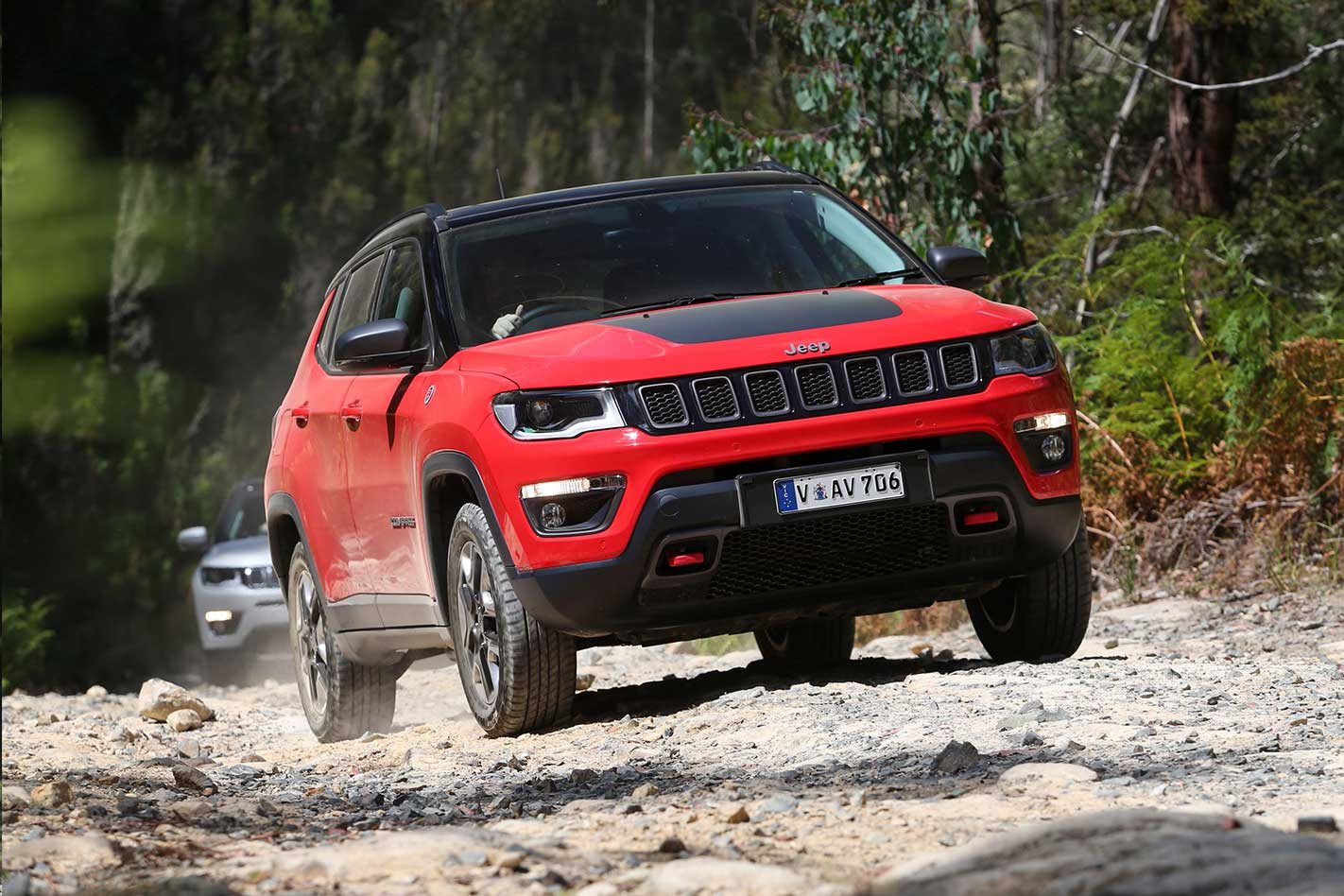
Off road, it handles rocky tracks that most of its competitors would baulk at. Engaging Rock Mode offers increased brake lock differential capacity, which minimises wheelspin and provides decent drive to the wheels with grip. While it’s certainly no rock-crawling beast, the Compass Trailhawk is more capable than you might expect.
How is life in the rear seats?
The rear seats in Jeep Compass offer lots of headroom and legroom. Rear-seat passengers get their own air/heating vents and a USB port plus the usual seatback pockets, fold-out armrest and bottle holders in the doors.
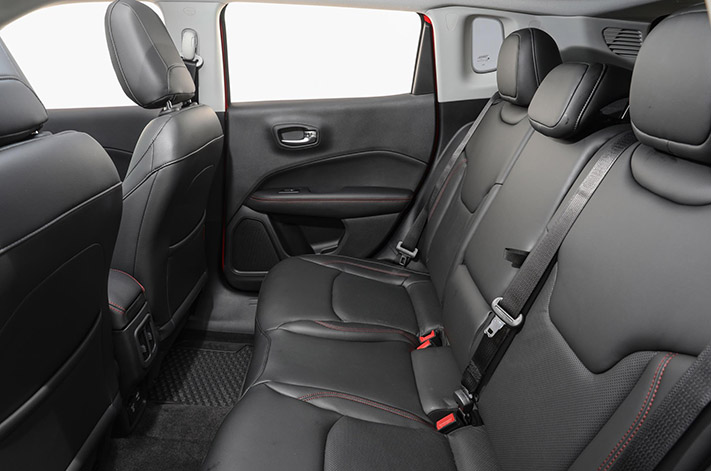
How is it for carrying stuff?
The Compass has a 438-litre boot space, which is one of the most generous in a small-SUV like this. The back seat folds 60/40 and reasonably flat, to lengthen the luggage space if need be.
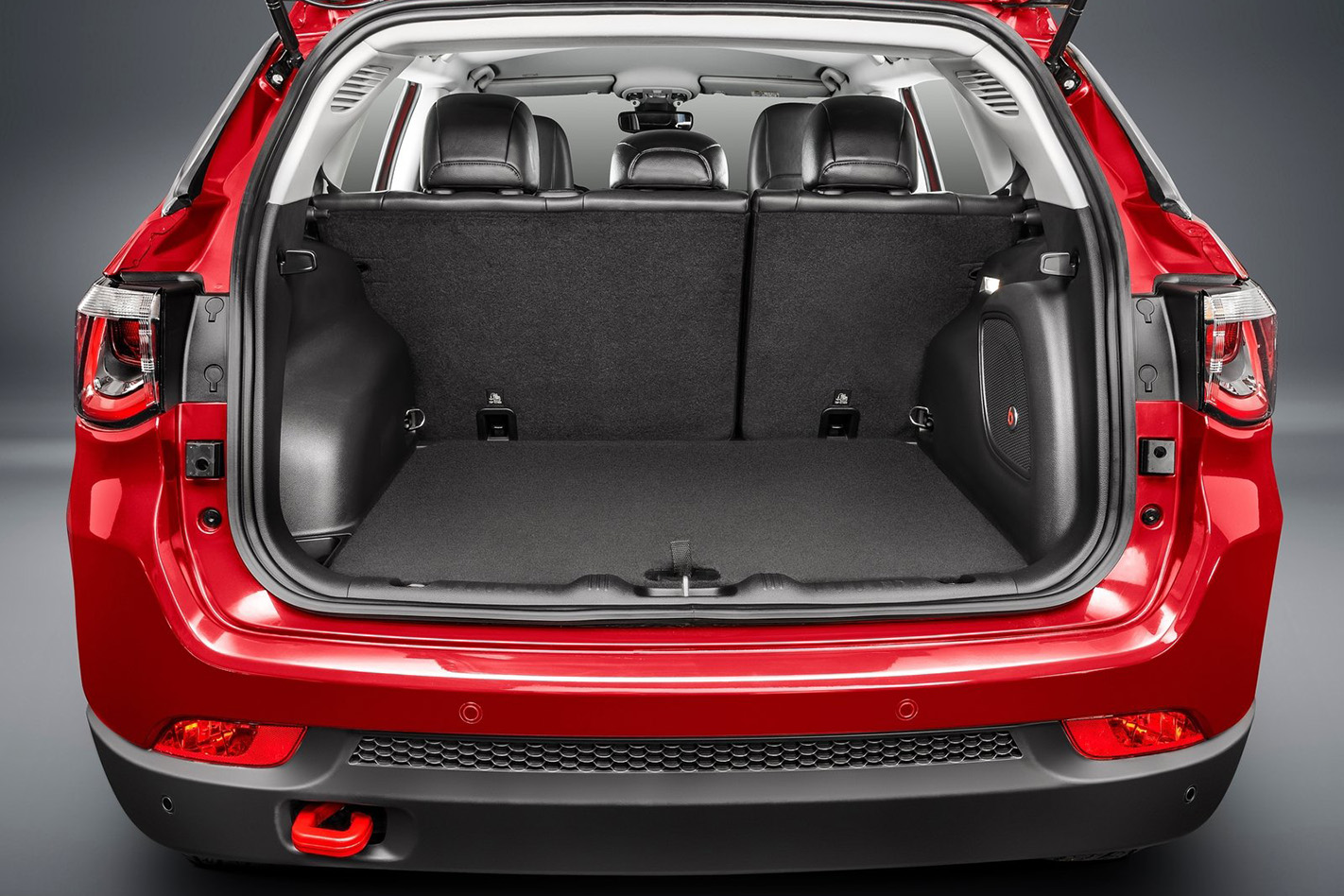
The Compass’s towing capacity is disappointing. Towing is not recommended at all for the front-wheel-drive Night Hawk variant, Limited and S-Limited AWD tows up to 1000kg and the Trailhawk 1500kg.
Where is it the Jeep Compass made?
All Australian-delivered Compasses are built in India.
Are there any rivals I should consider?
There are plenty of small-SUVs, but the Compass is one of the few with versions that have genuine off-road capability. Alternatives include the Compass’ smaller sibling the Jeep Renegade Trailhawk or the medium-sized Nissan X-Trail AWD and Subaru Forester.
If off-road capability isn’t a priority but you still want some practicality or robustness from a small-SUV, other options include the Honda HR-V, Subaru XV, Nissan Juke, Kia Seltos, Volkswagen T-Cross, and other Jeep Renegade models.
I like this car, but I can’t choose which version. Can you help?
The AWD models are superior to the front-drive petrol versions in almost every way. If you can afford it, go the whole hog with the Trailhawk which really lives up to Jeep’s go-anywhere spirit, while showing good road manners and superior fuel economy. That said the Limited is no slouch off-road either and has some nice creature comforts as standard.
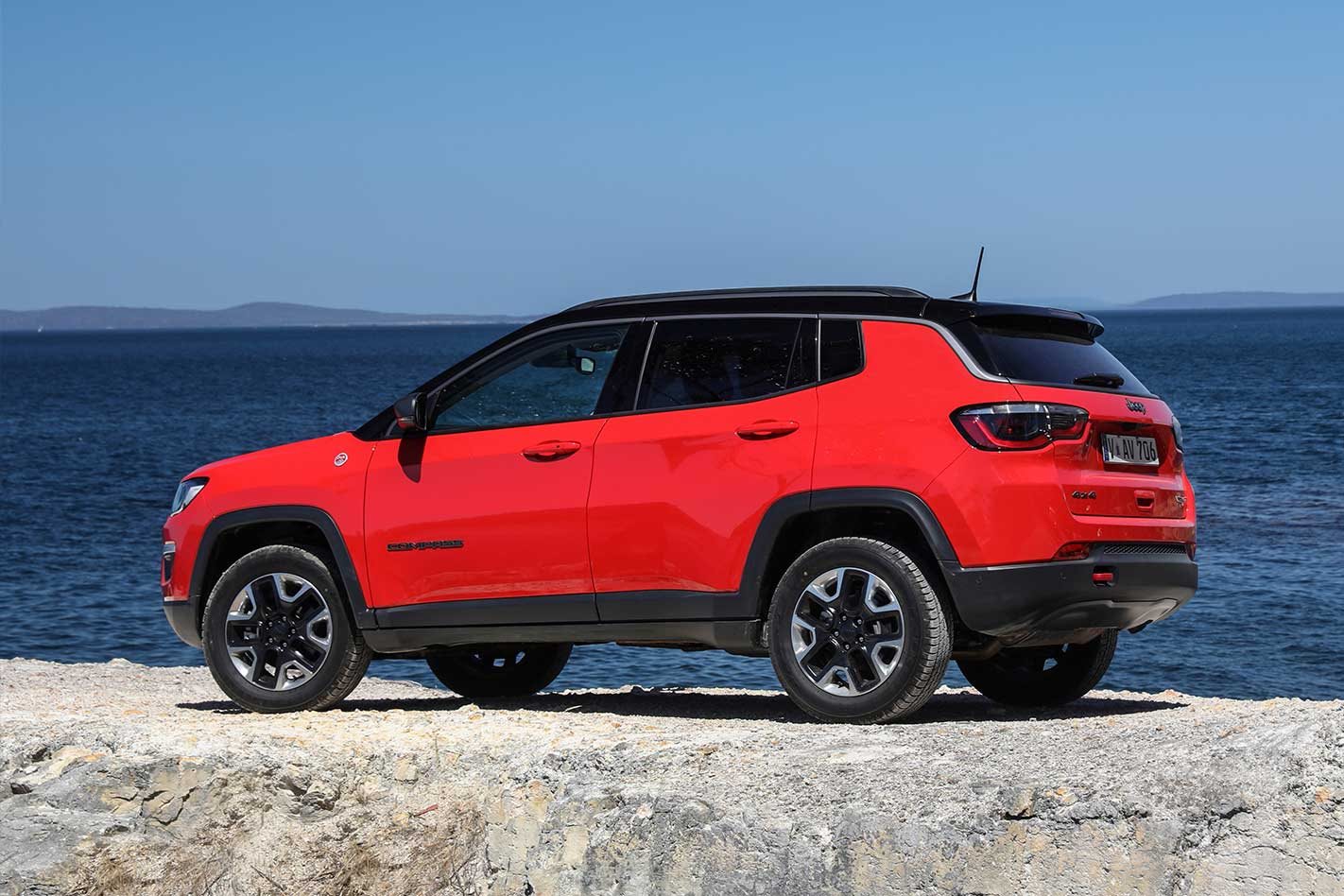
Are there plans to update the Compass soon?
The current-generation Jeep Compass arrived in late 2017.
The range was revamped in mid-2020 with the entry-level Sport version being renamed the Night Hawk and gaining active safety features such as AEB as standard, a larger touchscreen a few other extras. As a result, the Longitude spec was dropped, while S-Limited introduced with some extra bling over the Limited.
Expect an update sometime in 2021.
Score breakdown
Things we like
- Styling, ride and handling, off-road capability, boot space
Not so much
- Towing capacity, lacklustre petrol engine, AWD petrol fuel consumption



